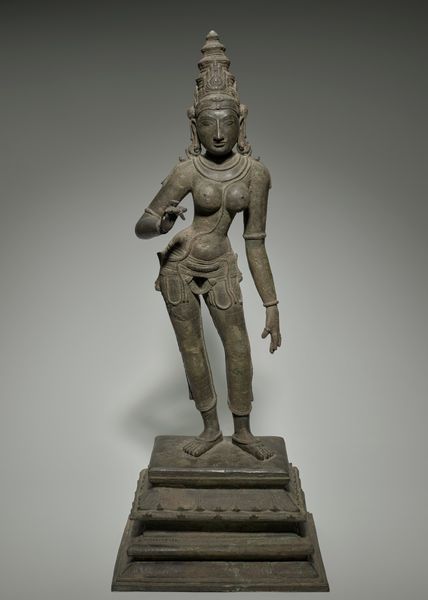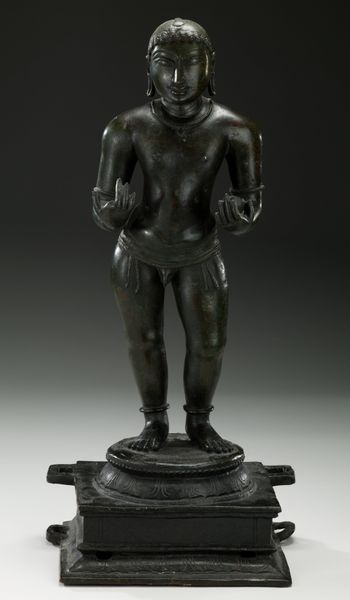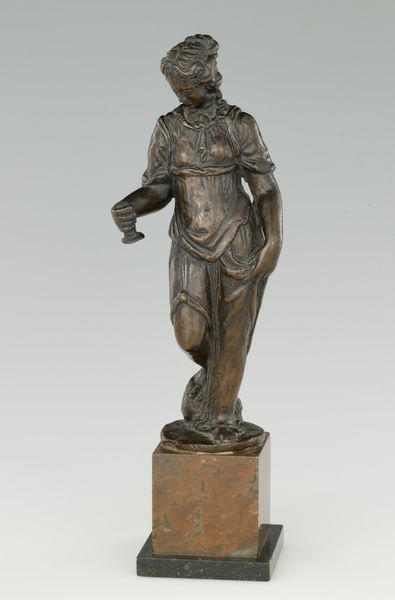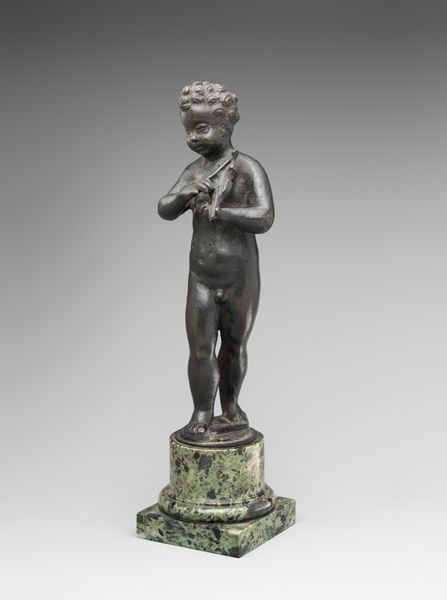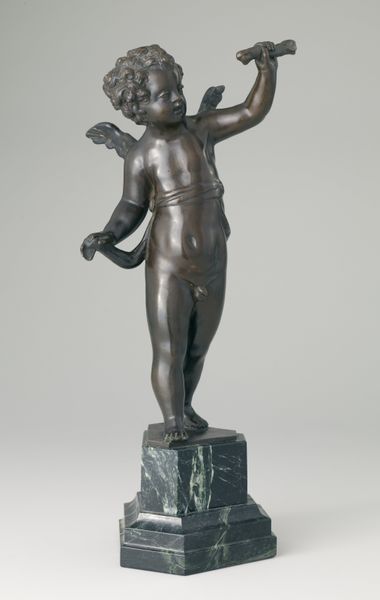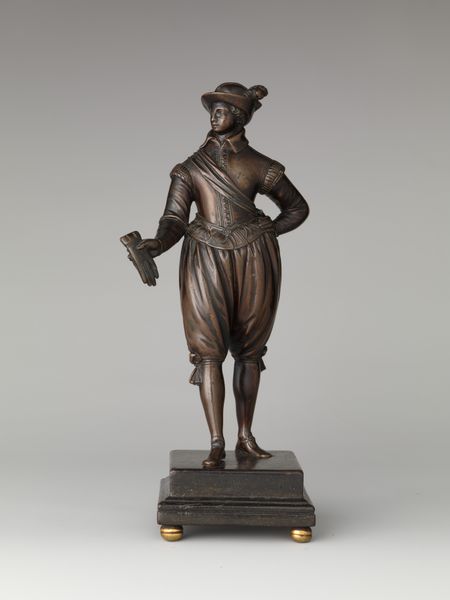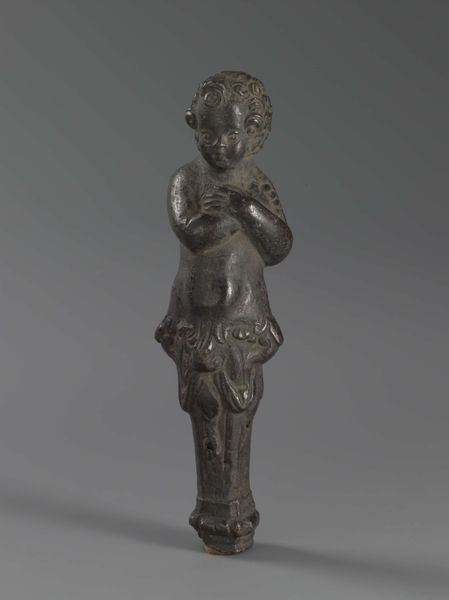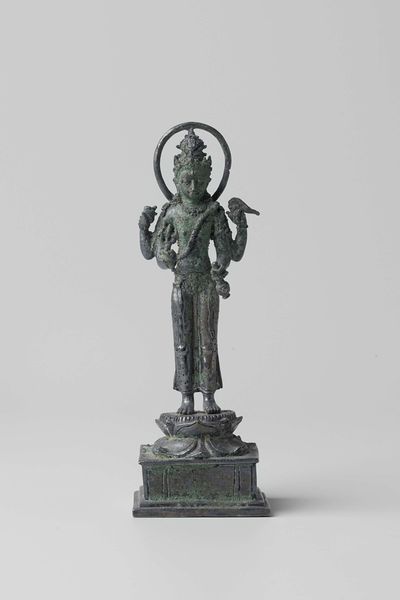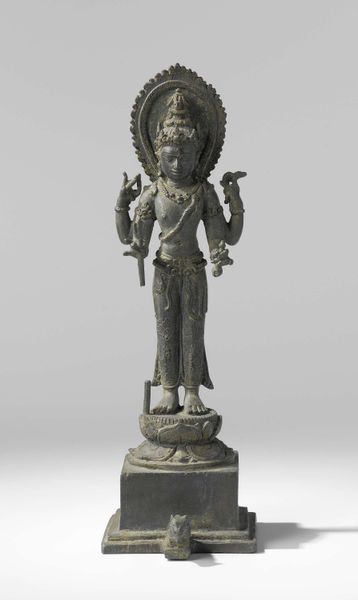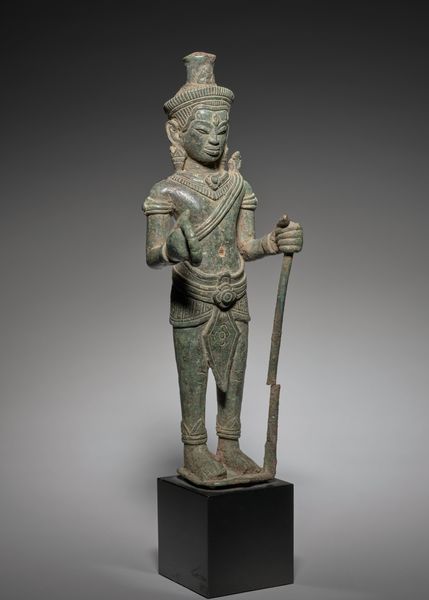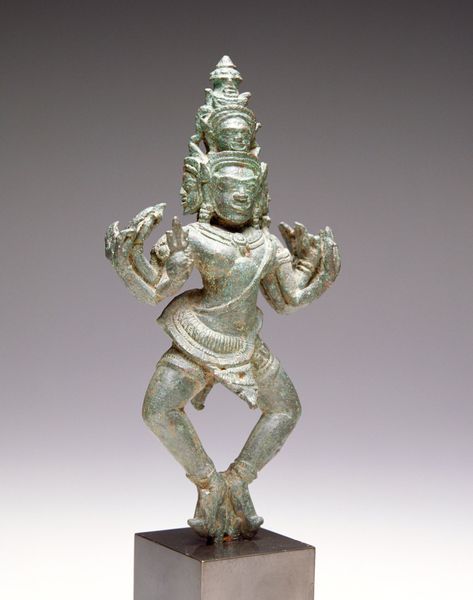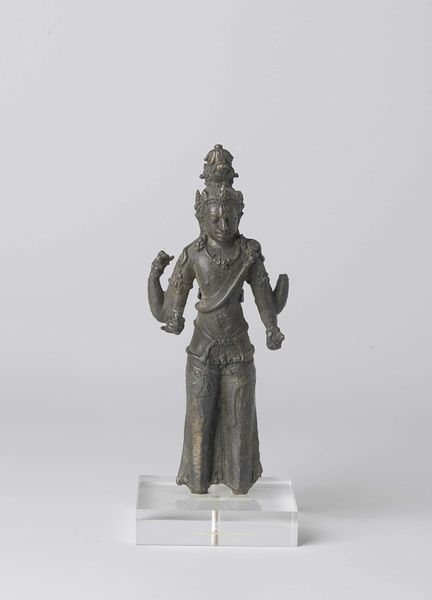
bronze, sculpture
#
portrait
#
medieval
#
sculpture
#
asian-art
#
bronze
#
figuration
#
sculpture
Dimensions: height 13 cm, width 5 cm, depth 3.4 cm, height 17.8 cm
Copyright: Rijks Museum: Open Domain
Editor: This bronze sculpture of Shiva, dating from between 850 and 925, is really captivating. There's a certain stillness about it, even though the multiple arms suggest dynamic action. How do you interpret this work within its historical context? Curator: It's crucial to remember that sculptures like this weren't merely aesthetic objects. They functioned within a specific social and political milieu. How might this sculpture have shaped the perception of Shiva’s power among its original viewers? Consider who commissioned it and where it was originally displayed. Editor: I hadn't thought about it quite that way. Knowing it was likely commissioned changes my perspective. It wasn't just a devotional object, but possibly a symbol of authority or even a political statement. Curator: Precisely! Bronze sculptures were expensive to produce, signalling wealth and power. Moreover, think about the transmission of Hindu iconography through such objects. How did representations like this establish and maintain a consistent understanding of Shiva across different communities? Editor: So, it's not just art for art's sake, but part of a larger socio-political narrative about disseminating power and religious understanding? Curator: Exactly. And the Rijksmuseum's acquisition and display of such works now reshapes that narrative again. How do you think placing it in a Western art museum affects its meaning for contemporary audiences? Editor: That’s a really important point. Presenting it in this context shifts the emphasis, perhaps away from the original devotional intent, toward an appreciation of artistic craftsmanship or cultural heritage. Curator: Indeed. And we, as curators, become part of that ongoing story, shaping how future generations will understand this Shiva. Editor: This conversation has completely changed how I see museum objects. Thanks for sharing your perspective. Curator: My pleasure. It is important to keep asking these questions to unpack the stories behind the art.
Comments
rijksmuseum about 2 years ago
⋮
The Hindu deity Shiva holds a jar of sacred water in his lower left hand and prayer beads in his upper right hand. We know from the smaller silver statuette nearby that in his two other hands he probably held a trident and a fly whisk. He wears a tiger skin around his hips, the animal’s head visible on his right thigh.
Join the conversation
Join millions of artists and users on Artera today and experience the ultimate creative platform.
